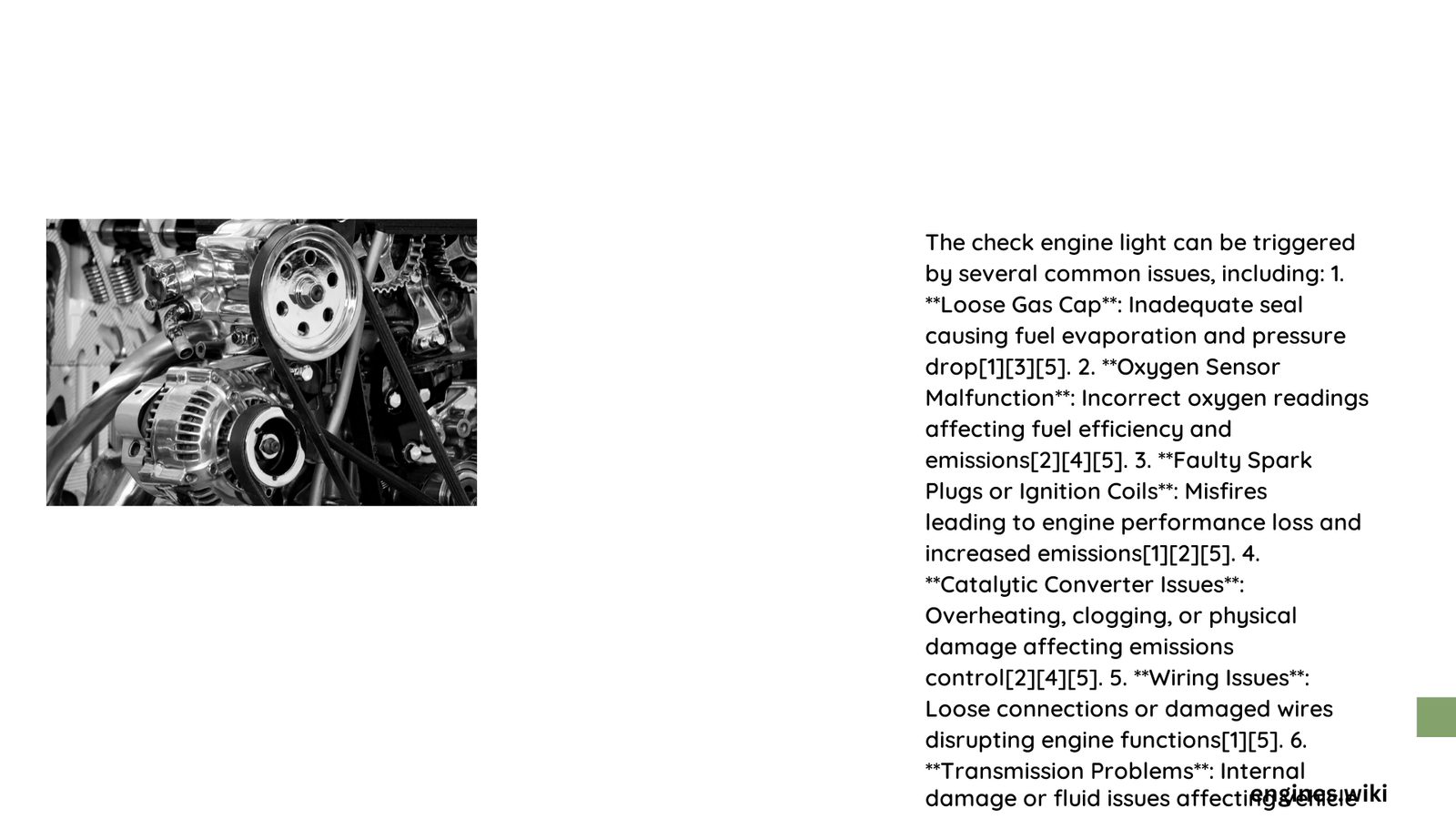When your vehicle’s check engine light illuminates, it can signal a range of potential issues from minor sensor malfunctions to critical system failures. Understanding these engine light possible problems is crucial for maintaining your vehicle’s performance, preventing costly repairs, and ensuring safe driving. This comprehensive guide will walk you through the most common triggers, diagnostic techniques, and practical solutions to address your vehicle’s warning signals.
What Causes Check Engine Light to Activate?
Top 10 Engine Light Possible Problems
| Problem | Frequency | Severity | Estimated Repair Cost |
|---|---|---|---|
| Loose Gas Cap | Very High | Low | $0-$20 |
| Oxygen Sensor Failure | High | Medium | $200-$500 |
| Catalytic Converter Issues | Medium | High | $500-$2000 |
| Spark Plug Malfunction | High | Medium | $100-$300 |
| Mass Airflow Sensor Failure | Medium | Medium | $250-$400 |
How to Diagnose Engine Light Problems?
Essential Diagnostic Tools
- OBD-II Scanner
- Multimeter
- Fuel Pressure Gauge
- Vacuum Diagnostic Kit
Step-by-Step Diagnostic Process
- Initial Inspection
- Check gas cap tightness
- Verify fluid levels
-
Look for visible damage or leaks
-
Code Reading
- Connect OBD-II scanner
- Record and research specific error codes
-
Determine potential root causes
-
Advanced Diagnostics
- Perform electrical system tests
- Check sensor voltages
- Evaluate fuel system pressure
What Are Common Sensor-Related Issues?
Oxygen Sensor Problems
- Disrupts fuel-to-air mixture
- Reduces fuel efficiency
- Increases emissions
- Typical replacement interval: 60,000-100,000 miles
Mass Airflow Sensor Challenges
- Inaccurate air volume measurements
- Causes improper fuel injection
- Can lead to rough engine performance
How Expensive Are Potential Repairs?
Repair Cost Breakdown
– Minor Issues (Gas Cap, Sensors): $50-$500
– Moderate Repairs (Spark Plugs): $200-$600
– Major Repairs (Catalytic Converter): $1,000-$2,500
Prevention and Maintenance Tips
- Regular vehicle servicing
- Use high-quality fuel
- Address warning signs immediately
- Perform periodic diagnostic scans
- Maintain recommended maintenance schedule
Technical Insights
Diagnostic Trouble Codes (DTCs)
- P0xxx: Powertrain generic codes
- P1xxx: Manufacturer-specific codes
- Provide precise problem identification
Expert Recommendations
- Never ignore persistent check engine light
- Use professional diagnostic services for complex issues
- Understand your vehicle’s specific maintenance requirements
Potential Long-Term Consequences
Ignoring Check Engine Light Can Lead To:
– Decreased fuel efficiency
– Potential engine damage
– Increased repair costs
– Reduced vehicle performance
– Higher emissions
When to Seek Professional Help?
- Persistent warning light
- Multiple error codes
- Complex electrical system issues
- Performance degradation
- Unusual vehicle behavior
Conclusion
Understanding engine light possible problems empowers vehicle owners to make informed maintenance decisions. By recognizing warning signs, utilizing proper diagnostic techniques, and addressing issues promptly, you can ensure your vehicle’s longevity and performance.

